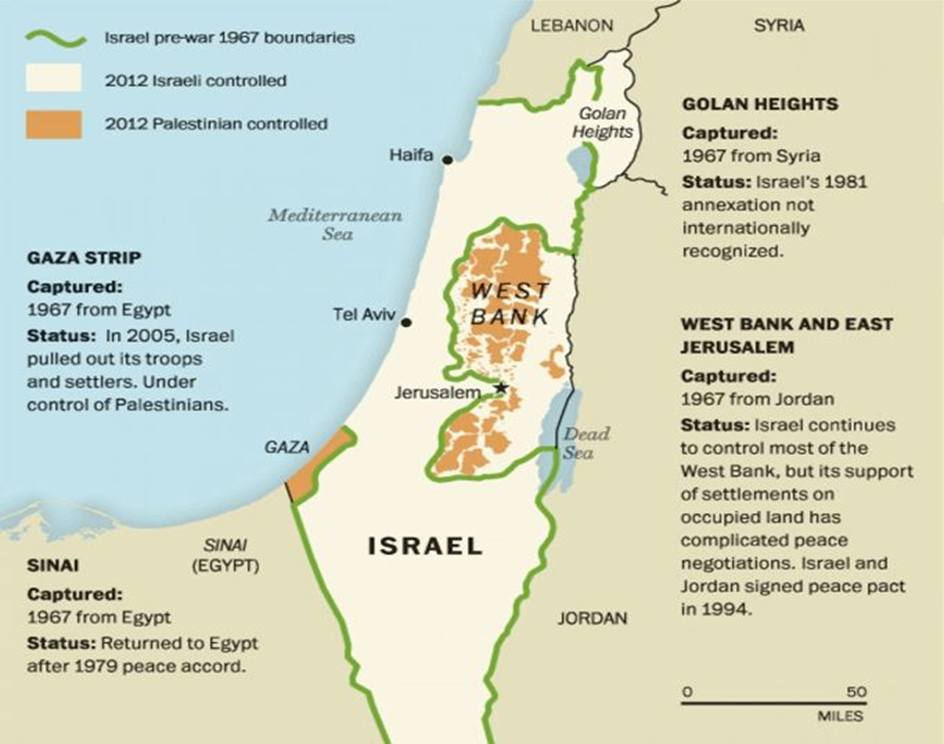HOW BAD IS THE HUMANITARIAN CRISIS IN GAZA?
Syllabus:
- GS-2 -International relations and UN agencies
- GS-4– Ethics in international relations
Why in News:
- Ongoing Israel-Palestine crisis and the human and political angle behind it .
Source:- UN
Introduction:
- Gaza faces an escalating humanitarian crisis after six months of conflict, described by EU’s foreign policy chief as the “world’s largest open-air graveyard”.
Situation in Gaza:
- Gaza’s infrastructure is devastated, with much of the population displaced to Rafah.
- Gaza’s health authorities report over 32,000 Palestinian deaths and 74,000 injuries, predominantly women and children.
- Healthcare facilities are overwhelmed, lacking essential resources, exacerbating suffering, as noted by the WHO.
Impact on Population:
- The UN warns of an imminent famine, with over 2.3 million people affected.
- Approximately two million internally displaced persons reside in makeshift camps in the south.
- Refugee camps face dire sanitation conditions, leading to rampant diseases like hepatitis A and diarrhoea.
- The Integrated Food Security Phase Classification (IPC) report classifies Gaza’s situation as “catastrophic”.
- Severe Hunger Crisis:Gaza experiences the most severe hunger crisis globally, with acute malnutrition rates soaring.
- Child malnutrition rates have surged from 0.8% to 12.4%-16.5% since October 7.
- Urgent calls for increased food and water supplies to avert mass starvation.
Root Causes:
- Gaza’s economy is decimated, with half of the north’s croplands damaged.
- Continuous Israeli bombardment has crippled the fishing sector and disrupted livelihoods.
- Limited aid entry exacerbates the crisis, with a drastic reduction in trucks entering Gaza.
Ongoing Challenges:
- International efforts, including airdrops and humanitarian aid, are insufficient to address the crisis.
- Israel’s refusal to allow more aid entry compounds the situation, drawing condemnation from global bodies.
- The UN emphasizes the urgent need for a ceasefire to alleviate Gaza’s suffering.
Proposed Solutions:
- Various UN agencies advocate for an immediate cessation of hostilities to address the humanitarian tragedy.
- Negotiations, mediated by Qatar, Egypt, and the US, aim to achieve a lasting ceasefire.
- Disagreements persist between Israel and Hamas, prolonging the conflict despite international calls for peace.
Conclusion:
- Gaza’s humanitarian crisis demands urgent action to halt the conflict and alleviate suffering.
- A ceasefire is imperative to facilitate the delivery of essential aid and address the root causes of the crisis.
- International cooperation is crucial in finding a lasting solution to the protracted conflict in Gaza.
Source:The Hindu
Mains Practice Question :
GS-2
“Discuss the humanitarian crisis in Gaza resulting from prolonged conflict and its impact on the civilian population, highlighting the root causes, ongoing challenges, and proposed solutions. Evaluate the role of international actors in addressing the crisis and the prospects for achieving a lasting ceasefire to alleviate the suffering of the affected population.”(250 words)
GS-4
You are a diplomat representing your country at the United Nations. The Security Council is convening to address the escalating humanitarian crisis in Gaza, following six months of conflict between Israel and Hamas. As a member of the Security Council, you are faced with complex ethical dilemmas concerning international relations and humanitarian intervention. Based on this answer the following questions
- Analyse the situation from perspective of different stakeholders
- What are the ethical dilemmas involved?
- Suggest the ways in which we can tackle the situation?
- What are the ethical values involved in the above condition?




